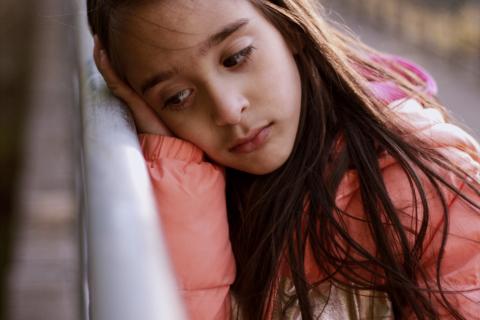The Impact of the Covid-19 Pandemic on Youth Mental Health

In December 2021, the U.S. Surgeon General issued an advisory recognizing that mental health challenges were the leading cause of disability and poor life outcomes in young people — with up to one in five children ages three to 17 in the U.S. having a mental, emotional, developmental or behavioral disorder.
The Academy of Pediatrics (AAP), the American Academy of Child and Adolescent Psychiatry (AACAP) and the Children’s Hospital Association (CHA) declared a National State of Emergency in Children’s Mental Health to bring about awareness and target efforts where they’re needed most.
Prior to the pandemic, this coalition reported the second leading cause of death for youth ages 10-24 was suicide. Since then, they’ve observed a significant rise in emergency room visits due to cases related to youth mental illness, noting that the pandemic has exacerbated pre-existing mental health conditions. It has also highlighted disparities within preventative mental health education and interventional support and treatment.
To account for the rise in hospital visits related to youth mental health, there are several factors to consider.
Isolation
The sudden closure of schools and countless youth-focused organizations created dependency on remote and virtual resources – highlighting inequity with regards to access. Youth in rural and low-income areas experienced further isolation; online learning and telehealth care were inaccessible if not completely unavailable.
Barriers to Care
Youth in racially and ethnically diverse households disproportionately faced the same barriers in accessing care, as did youth in immigrant households who were often tasked with navigating these systems in their second language. Youth identifying within the LGBTQ+ community were forced into homes where their identity and/or sexual orientation may not have been supported, putting them at greater risk for self-harm or suicide.
Emotional Suffering
Without trusted adults and safe spaces, essential to their social and emotional development, youth began reporting feelings sadness, fear, isolation and anxiousness in greater frequency.
For some, these feelings manifested into behaviors impacting their sleeping and eating habits as well as their interest in participating in school and social events. They started displaying the five signs of emotional suffering, and without their built-in support systems like school, athletics and clubs, their needs had the potential of going unaddressed.
Despite the alarming demand for more accessible youth mental health services, there’s much we can do at both the community and individual level that will have an immediate impact on creating more positive developmental outcomes.
Maintain a Daily Routine
For starters, things like maintaining a daily routine, from when children and young adults rise to when they go to sleep, establishes a foundation of predictability and control that will last them a lifetime. It also promotes healthy sleeping and eating habits, both of which contribute to overall health and well-being. Routines provide opportunities to observe your child’s behavior over a period of time to more easily recognize any changes such as a decreased appetite or increased fatigue, both of which could be indicators of an emerging mental illness.
Model Self-Care
Perhaps one of the most effective, albeit difficult, actions caregivers can take to support their child’s mental health is to model their own self-care. Whether it’s going for a walk, talking to a friend or closing the door to inhale and exhale a few cleansing breaths, taking time for yourself demonstrates not only emotional regulation, but healthy responses to life’s inevitable stressors.
Create Opportunities to Engage
Lastly, providing your child with opportunities to engage in activities that promote their social and emotional development will directly impact their overall health and happiness through outlets for self-expression. Seek out school extracurriculars and community groups such as your county’s local 4-H club. Financial aid is typically available, upon request, so cost won’t create a barrier for participation.
Resources for learning more:
